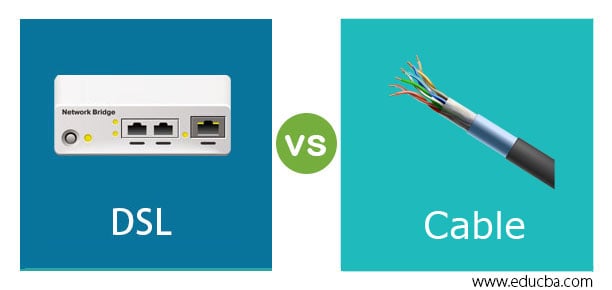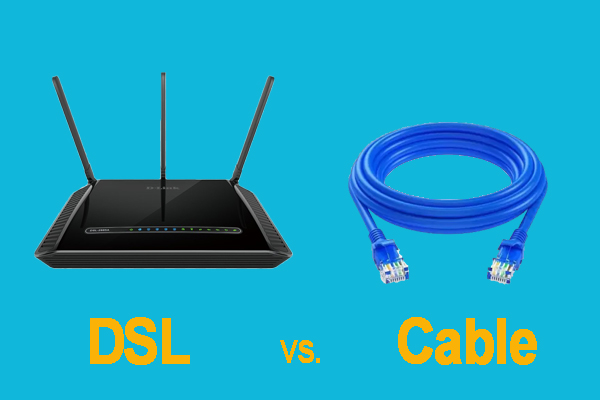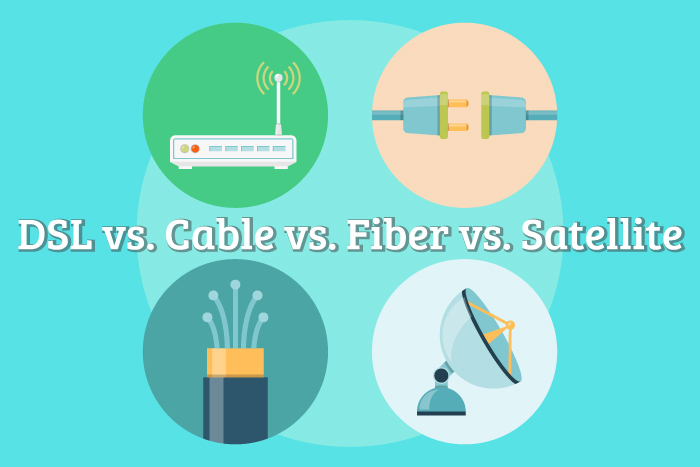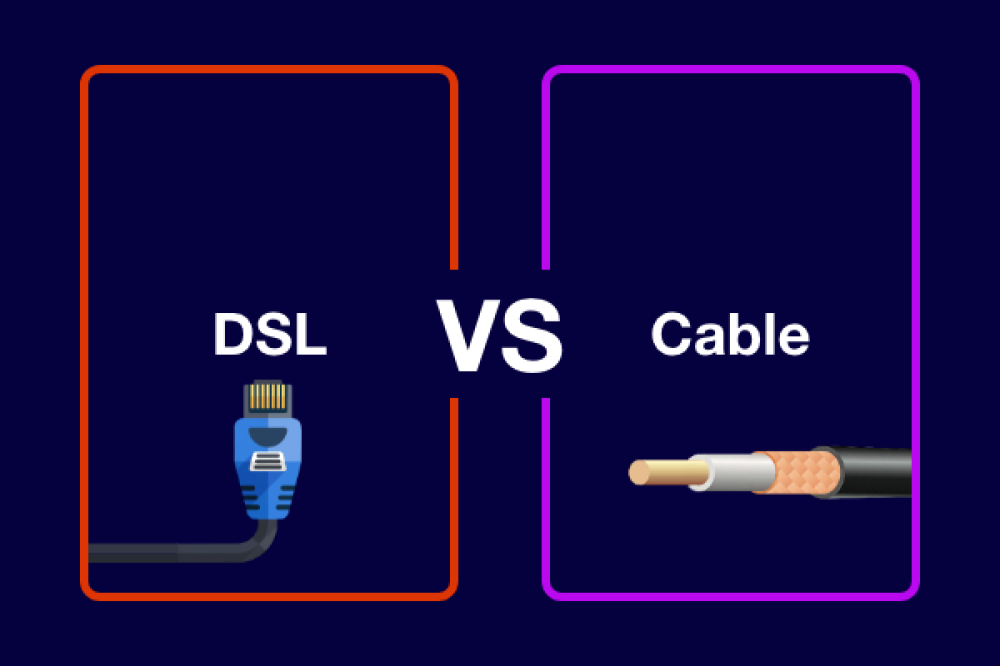In today’s digitally connected world, having a reliable and fast internet connection is essential. When it comes to choosing the right internet service provider (ISP), two popular options often come to mind: DSL and cable. Both DSL (Digital Subscriber Line) and cable provide high-speed internet access, but they do so in different ways. In this comprehensive guide, we will compare DSL and cable internet connections, examining their differences, benefits, and considerations, to help you make an informed decision about which option is best for your needs.
Understanding DSL
DSL, or Digital Subscriber Line, is a type of high-speed internet connection that utilizes existing copper telephone lines to transmit data. Unlike traditional dial-up connections, DSL is always on and offers significantly faster speeds. DSL requires a DSL modem, unless your computer already has an internal modem. The speed of DSL-based connections can range from several hundred kilobits per second (Kbps) to millions of bits per second (Mbps).
Types of DSL Connections

There are different types of DSL connections available, each catering to specific needs. One common type is Asymmetric Digital Subscriber Line (ADSL), which is primarily used for residential purposes. ADSL provides faster download speeds compared to upload speeds, making it ideal for households that consume a lot of online content.
Another type of DSL connection is Symmetric Digital Subscriber Line (SDSL), which is more suited for businesses requiring video conferencing and significant bandwidth for both upstream and downstream data. SDSL offers equal upload and download speeds, ensuring efficient data transfer in both directions.
For businesses with higher demands, there are faster DSL options available, such as High-bit-rate Digital Subscriber Line (HDSL) and Very-High-bit-rate Digital Subscriber Line (VDSL). These variants provide even greater bandwidth and speed, enabling seamless operations for data-intensive tasks.
Unveiling Cable Internet
Cable internet is another popular option for high-speed broadband access. It utilizes a cable modem and a coaxial cable, similar to the wiring used for television connections. With cable internet, you can enjoy fast internet speeds while still being able to watch your favorite TV shows. Performance in cable internet is dependent on the user’s cable modem, cable network, and traffic load.
Comparing Speeds
When it comes to comparing speeds between DSL and cable, both options can provide similar results in terms of upload and download speeds. However, it’s important to note that the actual speeds can vary based on factors such as time of day and overall usage. In a study on speed tests, researchers found that DSL-based services delivered download speeds that were 85 percent of the advertised speeds, while cable-based services delivered 99 percent of the advertised speeds. While the speeds may be comparable, cable internet has a slight edge in terms of faster speeds.
Factors to Consider
When deciding between DSL and cable internet, there are several factors to consider before making a final decision. Let’s delve into these factors to help you evaluate the best option for your specific needs.
Environment and Location
Consider your environment and location when choosing an internet connection. DSL internet availability can be limited to certain areas due to the distance from the service provider’s central location. Cable internet, on the other hand, is generally more widely available, especially in urban areas. If you live in a rural setting, it’s crucial to check the availability of both DSL and cable services in your area before making a decision.
Bundle Offerings and Services

Another aspect to consider is how broadband internet access is packaged with other services. Many ISPs offer bundled packages that include home telephone, home entertainment, and home security services along with internet access. Evaluate the bundle offerings and determine if there are any additional services that align with your needs. Compare the prices and features of these bundled packages to make an informed decision.
Pricing and Budget
Pricing is an important consideration for many individuals and households. Compare the prices of DSL and cable internet services, taking into account any additional fees or charges. While DSL internet may be more affordable in some cases, cable internet often provides more consistent and faster speeds, which may justify the slightly higher cost. Determine your budget and prioritize the factors that are most important to you, whether it’s speed, reliability, or affordability.
Usage and Bandwidth Requirements
Understanding your internet usage and bandwidth requirements is crucial in selecting the right internet connection. Consider how you and your household members use the internet. If you primarily browse the web, stream videos, and download files, both DSL and cable can meet your needs. However, if you require significant bandwidth for activities like video conferencing or online gaming, cable internet’s faster speeds and more reliable performance might be the better choice.
Technical Support and Customer Service
Reliable technical support and customer service are essential when it comes to internet connections. Research the reputation of the ISPs in your area and read reviews to gauge the quality of their support services. Look for ISPs that offer 24/7 technical support and have a track record of prompt and efficient customer service. A reliable support system ensures that any issues or concerns you may have with your internet connection are addressed in a timely manner.
Making the Decision: DSL or Cable?
After considering all the factors mentioned above, you should have a clearer understanding of whether DSL or cable internet is the right choice for you. DSL is a suitable option for residential users who primarily consume online content, while cable internet offers faster speeds and is generally more widely available. Ultimately, the decision boils down to your specific needs, budget, and location.
To make the most informed decision, consult with various ISPs and compare their offerings, prices, and contract terms. Evaluate the benefits and limitations of each option based on your individual requirements. Remember that internet technology is constantly evolving, so it’s important to stay informed about any new advancements that may affect your decision.
Conclusion

In conclusion, choosing the right internet connection is crucial for staying connected and enjoying the benefits of the digital world. DSL and cable are two popular options, each with its own set of advantages and considerations. DSL utilizes existing copper telephone lines and offers various speeds to cater to different needs, while cable internet provides fast speeds through a cable modem and coaxial cable.
Consider factors such as your location, bundle offerings, pricing, usage requirements, and technical support when deciding between DSL and cable. By thoroughly evaluating these aspects, you can make an informed decision that aligns with your specific needs and preferences.
Remember, the internet is an essential resource, and selecting the right internet connection can enhance your online experience and keep you connected with the digital world. Choose wisely, and enjoy the benefits of a reliable and fast internet connection.
